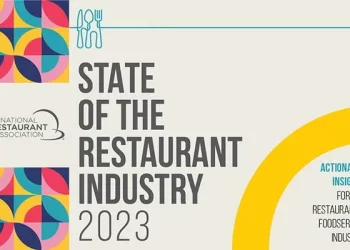- Asia Pacific contributes 40% of world foodservice gross sales
- Supply threatens dine-in share, boosted by third get together subscriptions encouraging repeat orders
- Digital improvements on the forefront of buyer engagement and model differentiation
Euromonitor Worldwide’s World Market for Consumer Foodservice 2025 report highlights that is pushed by sturdy development within the Asia Pacific area, which contributed to 40% of world foodservice gross sales, with a 6% forecast worth Compound Annual Progress Price (CAGR) for 2029.
Regardless of financial uncertainties, the worldwide shopper foodservice business grew in 2024, reaching a complete market worth of USD3.2 trillion, a 5.5% enhance from 2023. This means a continued path to restoration and development alternatives.

Rocio Franco, senior advisor at Euromonitor Worldwide, stated: “Inflation and financial uncertainty stay main considerations for customers. Regardless of international transactions recovering to pre-pandemic ranges, indicating robust demand within the business, customers are nonetheless reducing again on spending and choosing extra reasonably priced choices.”
Supply is more and more taking market share from eat-in eating, making up 21% of the worldwide shopper foodservice market in 2024, up from 9% in 2019.
By 2029, supply is projected to account for twenty-four% of the foodservice market by 2029, whereas eat-in is anticipated to lose its share by 3%, right down to 52% by 2029
Providing comfort and worth, third-party gamers have amplified this with aggressive low cost competitors and elevated loyalty programme subscriptions, typically eradicating supply or service prices to reinforce frequency in orders.
Restricted-service eating places are additionally experiencing a growth, interesting to cost-conscious diners as they provide a versatile vary of merchandise. By strategising on ‘snackification’ with choices starting from smaller-sized, budget-friendly merchandise to extra premium selections, this strikes a steadiness between worth and high quality for customers.
Digital innovation and personalisation on the forefront
Foodservice manufacturers have been leveraging know-how to fulfill rising shopper expectations and differentiate in a crowded market. From launching proprietary apps to increasing loyalty programmes, this allows manufacturers to hyper-personalise customers’ experiences by tailoring choices and promotions based mostly on particular person wants.
Franco commented: “To retain prospects, restaurant operators should strategise to supply worth past value, specializing in enhancing experiences, embracing digitalisation, and constructing model loyalty.”
Improvements similar to similar to self-service kiosks, digital recognition, and voice automation in drive-throughs are serving to improve buyer engagement, assist new product improvement and supply a aggressive edge whereas driving omnichannel development.







